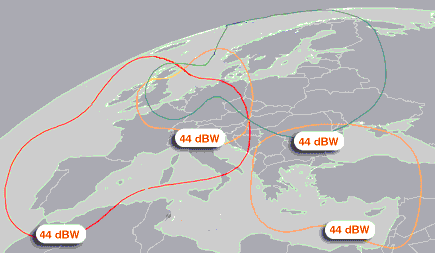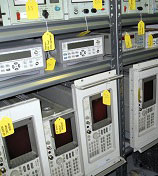Sustaining air travel business through in-flight service
Posted by
world Jr at Friday, September 4, 2009
Satellite Internet Service
IN-FLIGHT service is one of the competitive means airlines are employing to sustain their operations and attract more travellers, especially for their premium passengers. CHIKA EZEOKOLI writes that it has remained a device to boost business in air travel.
HOW would you feel when travelling in an aircraft and there was no food, drink or any other form of entertainment offered you? Definitely you would experience every ugly bit of the journey and the fear that comes with flying.
However, the provision of in-flight entertainment service to passengers by airlines has gone a long way to reduce the fear of flying and as a result, makes passengers feel more relaxed while aboard.
Though neglected and under-regulated by some airlines, this service should be of paramount importance to airline operators, not only to attract more passengers, but also for the enhancement of their air travel operations.
Over the years, food service or other entertainments in the aircraft has played a lot of roles in the passengers' choice of a particular airline. Ask most frequent travellers why they prefer an airline to another, they may tell you that one of the most important reason is that, the airline provides quality in-flight service to its passengers.
The service is important in every flight, because it takes your mind off from the fact that you are in air. Apart from safety, it makes you feel more relaxed, as a lot of activities would be going on around you.
Apparently, as aviation industry continues to grow in technology world wide, Nigerian airlines are also following the trend as some of them are acquiring new fleet aircraft with state-of-the-art In Flight Entertainment (IFE) system.
Most of our local carriers like Virgin Nigeria Airways, recently took delivery of Embraer aircraft with IFE, showing individual TV screens in front of every seat. While Aero Contractors has acquired modern aircraft, others such as Bellview, Afrijet and Chanchangi airlines have been providing quality meals to passengers aboard their flights.
Arik Air, just like others too, has in possession of a next generation aircraft A340-500, which has been attracting a large number of passengers to the airline, coupled with its quality in-flight services.
In-flight services, which could be in form of food, drinks, internet service, video games and others are being provided by the airlines to stray the passengers' minds away from the fear of flying for an hour or hours.
At first, in-flight service only consisted of looking out the window during a flight at the passing scenery and offering of food and drink services only along with an occasional projector movie during lengthy flights. But today, it has been improved internet services.
Several airlines are testing in-cabin wi-fi systems, that is, in-flight internet service, which is provided either through a satellite network or an air-to-ground network. In the Airbus A380 aircraft, data communication by satellite system will allow passengers to connect to live Internet from the individual IFE units or their laptops using the in-flight Wi-Fi access.
However, the service is offered as an option on almost all wide body aircraft, while some narrow body aircraft are not equipped with any form of In-flight entertainment at all. This is mainly due to the aircraft storage and weight limits.
The Boeing 757 was the first narrow body aircraft to widely feature both audio and video in-flight entertainment and today it is rare to find a Boeing 757 without an in-flight entertainment system.
In the 1990s, the demand for better IFE was a major factor in the design of aircraft cabins. Before then, what a passenger could expect was a movie projected on a screen at the front of a cabin, which could be heard through a headphone socket at his or her seat.
Some in the airline industry have begun referring to the entire in-flight-entertainment category as "IFEC" (In-Flight Entertainment and Connectivity or In-Flight Entertainment and Communication).
Meanwhile, Boeing had entered into the in-flight-connectivity industry in 2000 and 2001, with an offshoot called Connexion by Boeing. The service was designed to provide in-flight broadband service to commercial airlines, and Boeing built partnerships with United Airlines, Delta and American.
In the past two years, many United States (U.S.) commercial airlines have been testing and deploying in-flight connectivity for their passengers: Alaska Airlines, American, Delta, Southwest and United Airlines among others. Industry expectations are that by the end of 2011, thousands of planes flying in the U.S. will have been offering some form of in-flight broadband to passengers.
Many Airbus A320 series and Boeing 737NG aircraft are also equipped with drop-down screens. Some airlines, such as WestJet and Delta Air Lines, have equipped some narrow body aircraft with personal video screens at every seat. Others, like Air Canada and JetBlue, have equipped some regional jets with audio-video on demand (AVOD).
There are two major codes that regulate flight entertainment systems and their safety: code 1301 which approves the electronic equipment for installation and use, by assuring that the system in question is properly labelled, and that its design is appropriate to its intended function. While code 1309 states that the electrical equipment must not alter the safety or functionality of the aircraft upon the result of a failure.
In order for the intended IFE system to pass this code, it must be independent from that of the aircraft's main power source and processor. By separating the power supplies and data links from that of the aircraft's performance processor, in the event of a failure the system is self-sustained, and can not alter the functionality of the aircraft. Upon the completion of all applicable codes, the in-flight entertainment system is up to standards for use in the U.S., however the rules and regulations may be different when applying for use in other countries.
Reports have it that, software for in-flight entertainment systems must be aesthetically pleasing, reliable, compatible, and also must be user-friendly. These restrictions account for expensive engineering of individually specific software. In-flight entertainment equipment is often touch screen sensitive, allowing interaction between each seat in the aircraft and the flight attendants, which is wireless in some systems.
Most major airlines have now installed personal televisions for every passenger on most long-haul routes. These televisions are usually located in the seat backs or tucked away in the armrests for front row seats and first class. Some show direct broadcast satellite television, which enables passengers to view live TV broadcasts.
Private Flight Global Limited has also added two new features to its online system for in-flight catering management. The new features will allow private flight clients operators of privately managed and charter flights to further streamline their catering operation and achieve more transparency across their entire catering-related spend.
The new features, which have been developed and integrated into the system by private flight's in-house technical teams, are the first of a planned series of system enhancements due to be rolled out over the next 12 months.
Globally, some airlines like JetBlue Airways has been testing limited wireless access on one of its aircraft. The airline provides limited, free Wi-Fi on its BetaBlue aircraft using LiveTV. Services include e-mail access through Yahoo! Mail, Microsoft Exchange, Gmail, Windows Live (Hotmail, MSN, Live).
Passengers can transmit Yahoo! Instant messages and shop on Amazon.com's mobile site, and those with BlackBerry smart phones can access their accounts. JetBlue is not ruling out the possibility of offering expanded services for a fee, said company spokeswoman Alison Croyle. The airline plans to roll out the LiveTV service on more of its fleet this year, she said.
Other airlines, such as Continental, use LiveTV's satellite-based television programming service.
While majority of U.S. airlines offer for WiFi access in their aircraft, Alaska Airlines offers in-flight Wi-Fi through Row 44. The airline said it has launched a trial in mid-February on flights along the West Coast to determine usage and demand.
American Airlines has announced in late March that it would install Aircell's Gogo on more than 300 domestic aircraft over the next two years.
Aside that, Delta Air Lines is using Gogo, and will have Wi-Fi capabilities aboard more than 330 aircraft by the end of this year, the airline announced in August 2008.
Frontier Airlines uses LiveTV for its in-flight entertainment. The airline is testing a LiveTV product that would provide Wi-Fi, which they hope to launch by the end of the year.
Southwest Airlines is testing Wi-Fi on four of its aircraft using Row 44 technology. After testing, the airline will determine pricing and how it will install the product on the rest of its fleet, spokeswoman Whitney Eichinger said.
United Airlines will use Gogo technology as it begins testing Wi-Fi on flights between New York and California in the second half of this year. The airline will decide on availability elsewhere after assessing feedback from testing, said United spokeswoman Robin Urbanski.
Virgin America started offering Wi-Fi using Gogo on all flights between Washington and Los Angeles, California, and all of its Boston routes. Now all Virgin America planes have full Wi-Fi service.
The International Air Transport Association (IATA) has emphasized that in-flight services should be aimed to improve safety, quality and cost-effectiveness of the services for the benefit of Member airlines, partners and passengers.
source: www.ngrguardiannews.com













